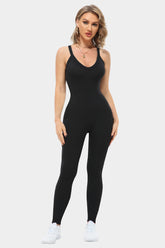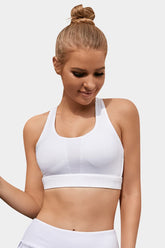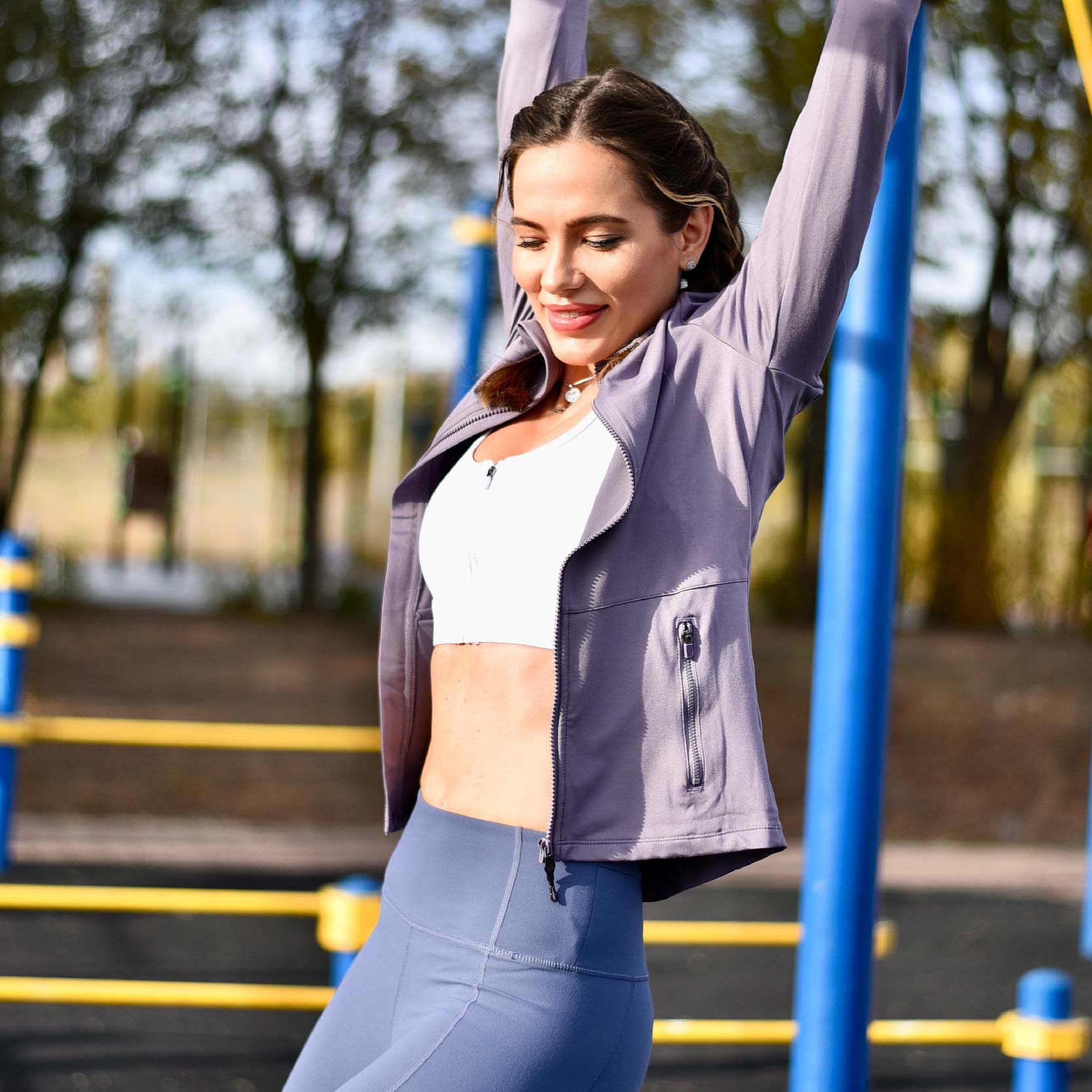36 Must-Know Basic Yoga Poses For Beginners (Updated 2022)
Yoga is a body and soul activity that may help you live a better existence. It allows you to relax, focus, and feel physically better. Yoga is the solution if you want to add something to your routine to help you live a healthy existence. You should begin with simple yoga asanas to develop a feel for them before progressing to more complicated asanas. Many yoga beginner poses are simple to do and equally vital.
A gut sense of internal anti-calm is somewhat of a ritual for beginners; it is an emotion you must endure before achieving the destiny of yogic nirvana; whether you get there or not, the stretches are a terrific type of fitness that we can all profit from, whether you meditate or not.
So, here are 36 fundamental basic yoga poses yoga beginner to get you started.
Yoga positions effective for beginners
Here are some poses to get you started on your yoga journey
01: Child’s Pose
Child’s pose is one of the basic yoga poses for beginners’. You'll undoubtedly remember this exercise from other workout courses since it is one of the cool-down stretches, as it is the go-to activity until the class becomes a touch too much and you want a respite. Kneel to ensure both big toes are in contact while your knees are roughly hip-width apart. Drop your hips down to your knees and lay your body on your hips as you exhale. Stretch your arms out, wrists flat on the floor, and gently lay your head on the mat.

Source: photo from online
02: Happy Baby Pose
The Happy Baby Position is a soft and calming pose that is wonderful for relaxing and extending the body. It entails shifting sideways while resting on your back.
It stretches the thighs, quadriceps, and pelvic region while releasing the buttocks and spine, leading to greater versatility. However, the benefits of the Happy Baby Pose go beyond enhanced agility. The advantages include relaxing the hips, groin, and pelvis.
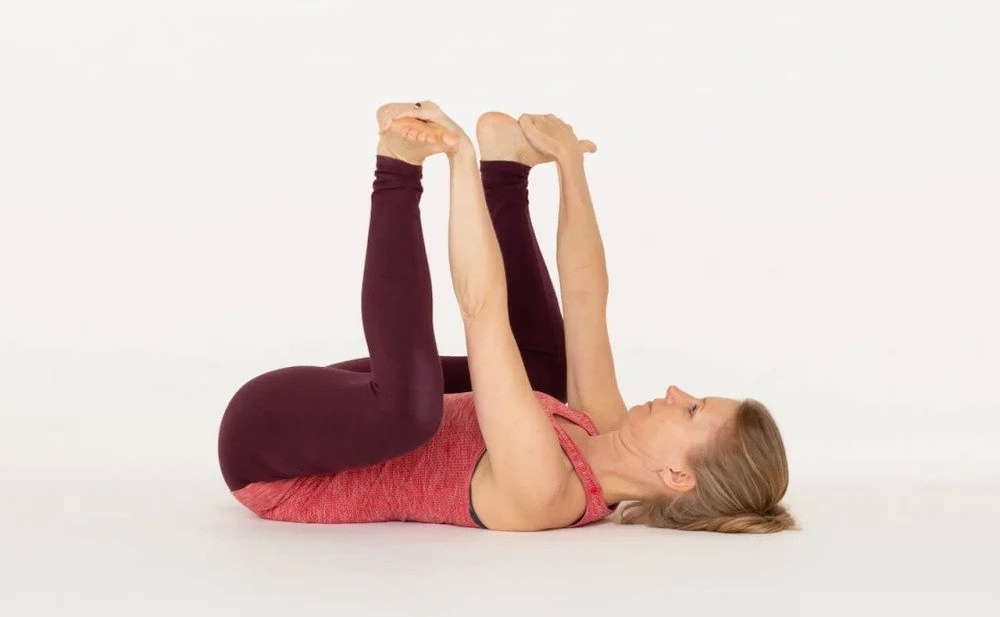
Source: photo from online
03: Downward-Facing Dog
A downward dog is a posture in which your heart is elevated over your forehead, permitting gravity to promote blood circulation and help in healing. It helps with posture. A downward dog lifts the muscles and arms, which helps straighten your spine and straighten your spine, resulting in better posture overall.

Source: photo from online
04: The Upward-Facing Dog
Upward-facing dog serves to stretch and develop the belly muscles while also improving the arms, wrists, biceps, and low back. When doing a vinyasa flow, an upward-facing dog suits various sunlight salutation series of poses.
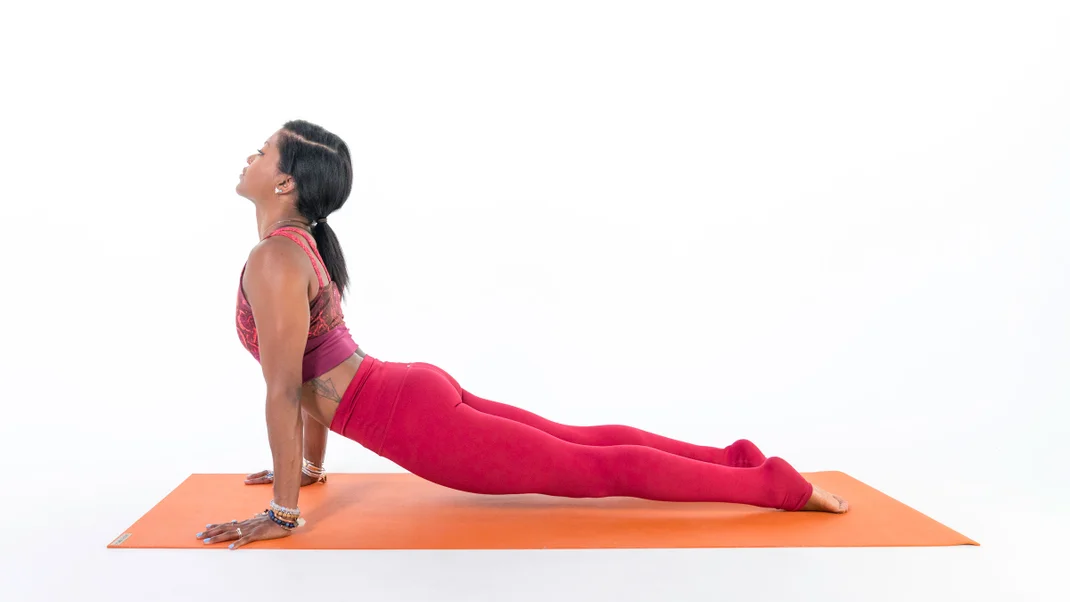
Source: photo from online
05: Plank Pose
The plank develops your spine, external rotators, quadriceps, and core muscles, resulting in a solid posture as they get stronger. Improving your posture can help you recover from many disorders and prevent the start of others.

Source: photo from online
06: Four-Limbed Staff Pose
In chaturanga, you must stimulate the muscles along the front of the back end of your body and squeeze your forearms tightly against your ribcage rather than allowing them to splay outward. This permits your chest to remain up in a hover. To keep a stable posture, you must stimulate your legs and arms and your abdominal muscles and elbows.
The Four-Limbed Staff Pose increases energy, combats weariness, and promotes confidence and assertiveness. It also helps to build strength in your core, elbows, forearms, ankles, legs, and knees.
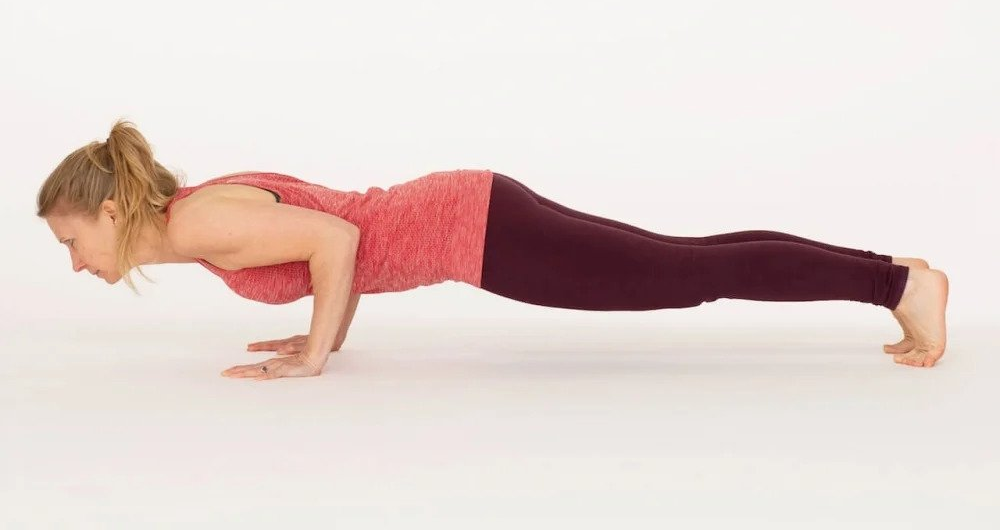
Source: photo from online
07: Plank, Low Plank
The Plank Position is an arm balancing yoga pose that strengthens the arms and spine while toning the abdominal muscles.
Drop your legs to the floor from a plank position. Then, try dropping your forearms until it is only a few inches over the floor. Keep your elbows pushed inwards to your sides, and pay attention to the top of your body when using it. Extend the length of the posture progressively.
Source: photo from online
08: Cobra Pose
The Cobra Pose is perfect for increasing spinal flexibility. It strengthens the backbone and arms while stretching the chest. It also helps open the airways, which is beneficial to asthma patients. This position also stimulates the stomach organs, resulting in better digestion.

Source: photo from online
09: Tree Pose
Tree Pose will put your equilibrium to the test. Slowly elevate your left leg with your legs clasped, and put the heel of your left foot on the upper thigh or ankle of your right leg. Keep your buttocks square and avoid bringing your foot near your knee. Put your hands on your chest and put your feet against each other. Start by lifting your arms if you feel energetic, and then start the other side.

Source: photo from online
10: Mountain Pose
It boasts balance and, when done regularly, can help relieve back discomfort. The knees, thighs, hips, tummy, and buttocks are all strengthened by this stance. It is also beneficial for minimizing the effects of flat feet and treating sciatica.

Source: photo from online
11: Pyramid Pose
This position is very beneficial for extending the hamstrings and arms. It strengthens postural patterns, enhances stability and full-body synergy, and soothes the mind. Parsvottanasana also stretches the backbone, shoulders, and hips. It is also beneficial for flat feet.

Source: photo from online
12: Warrior I
Warrior I pose involves beginning with your right leg ahead, take a long stride by stepping your hind leg more toward the back of the carpet. Flex your right leg such that your shin comes near your ankles but does not stretch over your toes. Raise your arms and stretch them upward. Try to keep your hips angled forward with both feet pointed in the same direction.
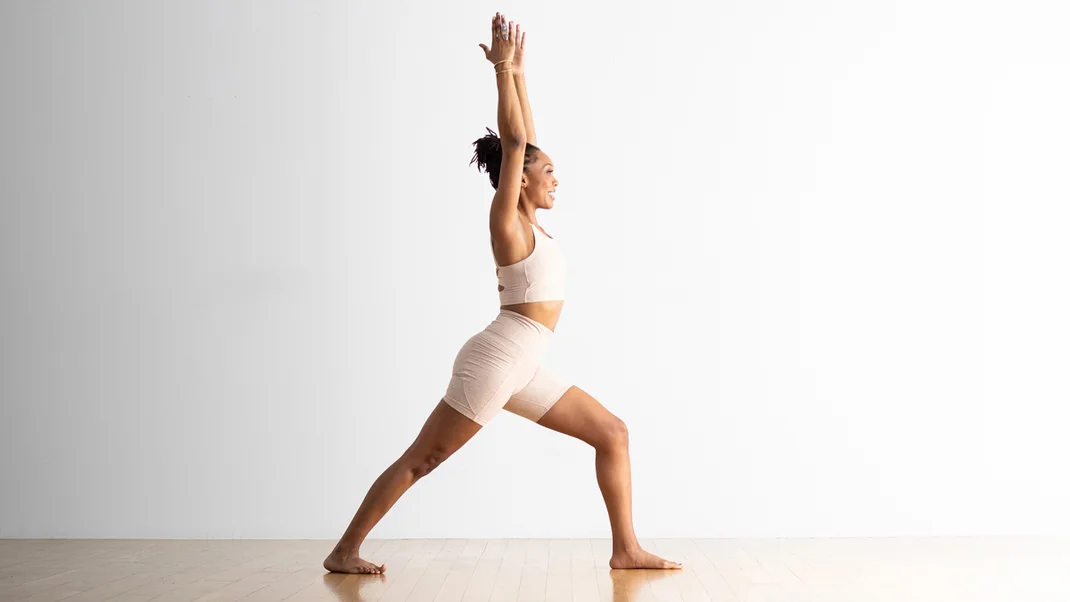
Source: photo from online
13: Warrior I I
Move your left foot to the edge of the yoga mat and tilt it at 90 degrees, as in Warrior 1. To prevent falling, apply force with the little toe line of your rear foot. Stretch your arms out in front of you, horizontal to the floor, arms held down. Maintain your eyes slightly over your right hand's ring finger, and stretch your arms downwards and far from your ears. Make sure your right knee is stacked next to your right thigh and behind your feet.

Source: photo from online
14: Extended Side Angle
It stretches the groins and quadriceps deeply while also increasing stamina. This position stretches and tones the core muscles while strengthening the quads, legs, and feet.

Source: photo from online
15: Standing Forward Bend
Standing Forward The bend covers the upper, center, and back muscles; goes near the neck; rounds over the hairline and down beneath the forehead; and ultimately ends at the place in between the brows. When you bend forward during Uttanasana, you lengthen the whole sheath of muscles, tendons, and ligaments that run from the apex of the forward stretch, the pelvis, to the shins.
Leaning with a forward stretch relaxes the mind and relieves stress. This position also tones the internal organs while stretching the thighs, ankles, and shoulders.

Source: photo from online
16: Half Forward Bend
Press down on the floor with your hands, and raise your chest (off the ground) and forward. You may need to gently drop your knees to perform this action to straighten your back. Here are some more forward-bending positions.

Source: photo from online
17: Raised Hand Pose
Maintain a grip on your leg muscles so that they bring the kneecaps up. Push into your toes as you rise thru the center of your head, arms over your head. Pull the navel gently towards the backbone while maintaining a lift in the chest. To get out of the posture, lower your arms.

Source: photo from online
18: Triangle Pose
The triangle position engages your abdominal muscles, which improves balance and stability. It stretches the spine. This position helps improve flexibility by reducing tension in the backbone and back. It helps to expand the upper torso.
Triangle Posture is a freestanding yoga pose that lifts the sternum and shoulders while stretching the thighs, hips, and pelvis. This posture promotes general strength and control while also exercising the lower muscles in the body.

Source: photo from online
19: Dancers Pose
Dancers' poses enhance balance, concentration, and positional consciousness; they improve reflexes and physical coordination. It can increase energy, combat weariness, and promote confidence. It relaxes your chest and arms while strengthening your abdominal and core muscles.

Source: photo from online
20: Half-Pigeon Pose
The pigeon posture is an excellent yoga pose for stretching the thighs and lower spine. Half-Pigeon Pose can improve hip flexors and lower back muscular flexibility and digestion when done correctly. Some people feel it can also help with mental tension or concern because of these emotions.

Source: photo from online
21: Seated Forward Fold
Seated Forward Fold (Paschimottanasana) is a well-known Hatha yoga position; it stretches the entire core of your body, from your quads to your tendons (the back of your hips) to your backbone.
Seated Forward Fold posture relaxes your mind, relieves tension, and stretches your backbone, chest, and legs. It also triggers the liver, hormones, and cervix for proper digestion.

Source: photo from online
22: Seated Half-Spinal Twist Pose
Put your legs apart with your knees slightly bent. Take a breath and turn to the right, either clutching your right ankle with your left arm or resting your left forearm towards the knee of your right thigh.

Source: photo from online
23: Bridge pose
Bridge posture is a back-fold and chest-opening yoga practice. This novice asana (position) requires elevating the thighs and chest while squeezing the arms into the surface to create a tunnel impact with the spine for flexibility.

Source: photo from online
24: Mountain Pose
Raise and stretch your toes and the arches of your legs, then gently place them back flat on the floor. Move around softly. Slowly bring your swaying to a halt, with your weight equally distributed across your feet.
It strengthens posture and, when done regularly, can help relieve back discomfort. The quadriceps, hips, knees, tummy, and buttocks are all strengthened by this stance. It can also help with sciatica and minimize the effects of flat feet.

Source: photo from online
25: Crescent Lunge
The Crescent Lunge opens the front body, chest, and shoulders while stretching the knees, groin, and hamstrings. It tones and strengthens the quads, groin, and tailbone, while the juggling element aids in the development of flexible stability.
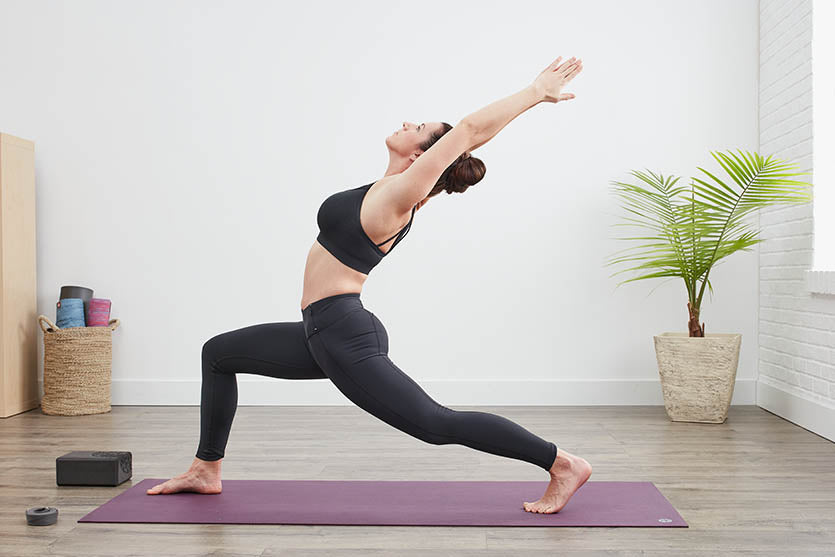
Source: photo from online
26: Low Lunge
A low lunge pose is a fundamental yoga posture that stretches the pelvis, thighs, and hips. Move one leg forward between both hands from a straight-down dog posture, placing the knee at a 90-degree angle directly above the ankle.
A low lunge relaxes the muscles in your hips; it stretches the hamstrings, quadriceps, and groin. It aids in the development of mental attention.

Source: photo from online
27: Reverse Warrior
Reverse Warrior is one of the basic yoga poses beginners may find interesting. It is a freestanding yoga practice that energizes the entire body while stretching the waist. Reverse Warrior develops the calves, lifts the different parts of the body, promotes spinal mobility, and develops the core and balance. You will feel a nice stretch in the front and back legs, groin, hip muscles, and chest intercostals.

Source: photo from online
28: Garland Pose
Garland Pose is a deep squat in yoga. It stretches your hips and groin, counteracting the tension that might build from sitting for long periods.
You can get support for stability initially to ensure you are doing the position comfortably. Then, gradually wean yourself off the supports, reducing them over time. It might be a time-consuming practice, but it helps and is critical for long-term mobility and pain relief.

Source: photo from online
29: Cat-Cow Stretch
The Cat-Cow Stretch improves the flexibility of the neck, shoulder, and spine. It also extends the hip, back, abdominal, and chest muscles. It makes your spine stronger, and this stretch awakens the tailbone while relieving stress in the back and neck.

Source: photo from online
30: Staff Pose
The basic stance for several sitting yoga postures is the staff pose. It is a sitting position with the legs extended in front of the torso and the backbone straight and firmly fixed.

Source: photo from online
31: Half-Lord of the Fishes Pose
Half-Lord of the Fishes Pose, or the Ardha Matsyendrasana, is a powerful, therapeutic twist that is strong and renewing. The position bends your entire body and enhances circulation, metabolism, and spinal flexibility.

Source: photo from online
32: Cobbler's Pose
Cobbler's Pose is a perfect pose for extending the inner leg muscles and expanding the hips. This seemingly basic stance also strengthens and improves your core and posture. This asana pose engages the tendons in your spine as you stretch and bend across your backbone.

Source: photo from online
33: Head-to-Knee Pose
The quadriceps, groin, and crotch muscles stretch in the head-to-knee pose. Runners and anyone who participates in running-related activities will often profit from this exercise to get tight quads. It is also a therapeutic position known to help with stress relief and mental calmness.

Source: photo from online
34: Supine Spinal Twist
The Spinal Twist in Supine is a variation on the Knees down Turn. Then lean back while having your left leg upright in the ankle-down twist. Your right knee rises and crosses the midline.

Source: photo from online
35: Seated Wide Angle Straddle
Seated Wide Angle Straddle Pose is named after the Sanskrit words upavistha and asana, which means posture.
This is an intermediate position in which the sit bones remain anchored as the body and hips slightly extend forward. The adductor, which links the femur and the pubic bone, is stretched in this stance.

Source: photo from online
36: Corpse Pose
Yoga practice is not complete until it includes a final relaxation pose. Corpse Stance (Savasana) is a restful pose, but it is not the same as napping. Try to be present and alert throughout the closing ten minutes of meditation.
Corpse posture is a must-do after any yoga session. This posture revitalizes the heart, brain, and soul while alleviating stress and tension.

Source: photo from online
Conclusion
If you are a beginner, you will find these yoga beginner poses fascinating. Yoga is a fantastic thing, and it should be incorporated into your daily routine if you want to live a long and peaceful life. However, before practicing yoga asanas at home without supervision, you must understand how to practice them correctly. Yoga practice is all about poses, and having the correct posture is critical to having the asanas perform properly for you. Finish your workout with five minutes of yoga meditation to notice your energy levels skyrocket.


